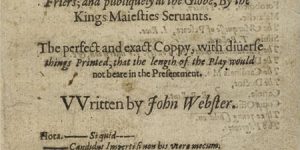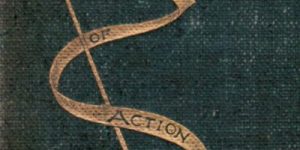The Mystery of the Sea by Bram Stoker
The Mystery of the Sea Chapter I. Second Sight
The Mystery of the Sea Chapter II. Gormala
The Mystery of the Sea Chapter III. An Ancient Rune
The Mystery of the Sea Chapter IV. Lammas Floods
The Mystery of the Sea Chapter V. The Mystery of the Sea
The Mystery of the Sea Chapter VI. The Ministers of the Doom
The Mystery of the Sea Chapter VII. From Other Ages and the Ends of the Earth
The Mystery of the Sea Chapter VIII. A Run on the Beach
The Mystery of the Sea Chapter IX. Confidences and Secret Writing
The Mystery of the Sea Chapter X. A Clear Horizon
The Mystery of the Sea Chapter XI. In the Twilight
The Mystery of the Sea Chapter XII. The Cipher
The Mystery of the Sea Chapter XIII. A Ride through the Mountains
The Mystery of the Sea Chapter XIV. A Secret Shared
The Mystery of the Sea Chapter XV. A Peculiar Dinner Party
The Mystery of the Sea Chapter XVI. Revelations
The Mystery of the Sea Chapter XVII. Sam Adamss Task
The Mystery of the Sea Chapter XVIII. Fireworks and Joan of Arc
The Mystery of the Sea Chapter XIX. On Changing Ones Name
The Mystery of the Sea Chapter XX. Comradeship
The Mystery of the Sea Chapter XXI. The Old Far West and the New
The Mystery of the Sea Chapter XXII. Crom Castle
The Mystery of the Sea Chapter XXIII. Secret Service
The Mystery of the Sea Chapter XXIV. A Subtle Plan
The Mystery of the Sea Chapter XXV. Inductive Ratiocination
The Mystery of the Sea Chapter XXVI. A Whole Wedding Day
The Mystery of the Sea Chapter XXVII. Entrance to the Cavern
The Mystery of the Sea Chapter XXVIII. Voices in the Dark
The Mystery of the Sea Chapter XXIX. The Monument
The Mystery of the Sea Chapter XXX. The Secret Passage
The Mystery of the Sea Chapter XXXI. Marjorys Adventure
The Mystery of the Sea Chapter XXXII. The Lost Script
The Mystery of the Sea Chapter XXXIII. Don Bernardino
The Mystery of the Sea Chapter XXXIV. The Accolade
The Mystery of the Sea Chapter XXXV. The Popes Treasure
The Mystery of the Sea Chapter XXXVI. The Rising Tide
The Mystery of the Sea Chapter XXXVII. Round the Clock
The Mystery of the Sea Chapter XXXVIII. The Duty of a Wife
The Mystery of the Sea Chapter XXXIX. An Unexpected Visitor
The Mystery of the Sea Chapter XL. The Redemption of a Trust
The Mystery of the Sea Chapter XLI. Treasure Trove
The Mystery of the Sea Chapter XLII. A Struggle
The Mystery of the Sea Chapter XLIII. The Honour of a Spaniard
The Mystery of the Sea Chapter XLIV. The Voice in the Dust
The Mystery of the Sea Chapter XLV. Danger
The Mystery of the Sea Chapter XLVI. Ardiffery Manse
The Mystery of the Sea Chapter XLVII. The Dumb Can Speak
The Mystery of the Sea Chapter XLVIII. Dunbuy Haven
The Mystery of the Sea Chapter XLIX. Gormalas Last Help
The Mystery of the Sea Chapter L. The Eyes of the Dead
The Mystery of the Sea Chapter LI. In the Sea Fog
The Mystery of the Sea Chapter LII. The Skares
The Mystery of the Sea Chapter LIII. From the Deep
The Mystery of the Sea Appendix A
The Mystery of the Sea Appendix B
The Mystery of the Sea Appendix C
The Mystery of the Sea Appendix D
The Mystery of the Sea Appendix E
The Mystery of the Sea Appendix B
ON THE REDUCTION OF THE NUMBER OF SYMBOLS IN BACON’S BILITERAL CIPHER
When I examined the scripts together, both that of the numbers and those of the dots, I found distinct repetitions of groups of symbols; but no combinations sufficiently recurrent to allow me to deal with them as entities. In the number cipher the class of repetitions seemed more marked. This may have been, however, that as the symbols were simpler and of a kind with which I was more familiar, the traces or surmises were easier to follow. It gave me hope to find that there was something in common between the two methods. It might be, indeed, that both writings were but variants of the same system. Unconsciously I gave my attention to the simpler form—the numbers—and for a long weary time went over them forward, backward, up and down, adding, subtracting, multiplying, dividing; but without any favorable result. The only encouragement which I got was that I got additions of eight and nine, each of these many times repeated. Try how I would, however, I could not scheme out of them any coherent result.
When in desperation I returned to the dotted papers I found that this method was still more exasperating, for on a close study of them I could not fail to see that there was a cipher manifest; though what it was, or how it could be read, seemed impossible to me. Most of the letters had marks in or about them; indeed there were very few which had not. Examining more closely still I found that the dots were disposed in three different ways: (a) in the body of the letter itself: (b) above the letter: (c) below it. There was never more than one mark in the body of the letter; but those above or below were sometimes single and sometimes double. Some letters had only the dot in the body; and others, whether marked on the body or not, had no dots either above or below. Thus there was every form and circumstance of marking within these three categories. The only thing which my instinct seemed to impress upon me continually was that very few of the letters had marks both above and below. In such cases two were above and one below, or vice versa; but in no case were there marks in the body and above and below also. At last I came to the conclusion that I had better, for the time, abandon attempting to decipher; and try to construct a cipher on the lines of Bacon’s Biliteral—one which would ultimately accord in some way with the external conditions of either, or both, of those before me.
But Bacon’s Biliteral as set forth in the Novum Organum had five symbols in every case. As there were here no repetitions of five, I set myself to the task of reducing Bacon’s system to a lower number of symbols—a task which in my original memorandum I had held capable of accomplishment.
For hours I tried various means of reduction, each time getting a little nearer to the ultimate simplicity; till at last I felt that I had mastered the principle.
Take the Baconian biliteral cipher as he himself gives it and knock out repetitions of four or five aaaaa: aaaab: abbbb: baaaa: bbbba: and bbbbb. This would leave a complete alphabet with two extra symbols for use as stops, repeats, capitals, etc. This method of deletion, however, would not allow of the reduction of the number of symbols used; there would still be required five for each letter to be infolded. We have therefore to try another process of reduction, that affecting the variety of symbols without reference to the number of times, up to five, which each one is repeated.
Take therefore the Baconian Biliteral and place opposite to each item the number of symbols required. The first, (aaaaa) requires but one symbol “a,” the second, (aaaab) two, “a” and “b;” the third (aaaba) three, “a” “b” and “a;” and so on. We shall thus find that the 11th (ababa) and the 22nd (babab) require five each, and that the 6th, 10th, 12th, 14th, 19th, 21st, 23rd and 27th require four each. If, therefore, we delete all these biliteral combinations which require four or five symbols each—ten in all—we have still left twenty-two combinations, necessitating at most not more than two changes of symbol in addition to the initial letter of each, requiring up to five quantities of the same symbol. Fit these to the alphabet; and the scheme of cipher is complete.
If, therefore, we can devise any means of expressing, in conjunction with each symbol, a certain number of repeats up to five; and if we can, for practical purposes, reduce our alphabet to twenty-two letters, we can at once reduce the biliteral cipher to three instead of five symbols.
The latter is easy enough, for certain letters are so infrequently used that they may well be grouped in twos. Take “X” and “Z” for instance. In modern printing in English where the letter “e” is employed seventy times, “x” is only used three times, and “z” twice. Again, “k” is only used six times, and “q” only three times. Therefore we may very well group together “k” and “q,” and “x” and “z.” The lessening of the Elizabethan alphabet thus effected would leave but twenty-two letters, the same number as the combinations of the biliteral remaining after the elision. And further, as “W” is but “V” repeated, we could keep a special symbol to represent the repetition of this or any other letter, whether the same be in the body of a word, or if it be the last of one word and the first of that which follows. Thus we give a greater elasticity to the cipher and so minimise the chance of discovery.
As to the expression of numerical values applied to each of the symbols “a” and “b” of the biliteral cipher as above modified, such is simplicity itself in a number cipher. As there are two symbols to be represented and five values to each—four in addition to the initial—take the numerals, one to ten—which latter, of course, could be represented by 0. Let the odd numbers according to their values stand for “a”:
a=1
aa=3
aaa=5
aaaa=7
aaaaa=9
and the even numbers according to their values stand for “b”:
b=2
bb=4
bbb=6
bbbb=8
bbbbb=0
and then? Eureka! We have a Biliteral Cipher in which each letter is represented by one, two, or three, numbers; and so the five symbols of the Baconian Biliteral is reduced to three at maximum.
Variants of this scheme can of course, with a little ingenuity, be easily reconstructed.








